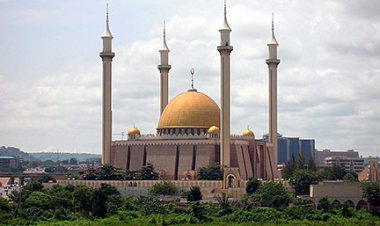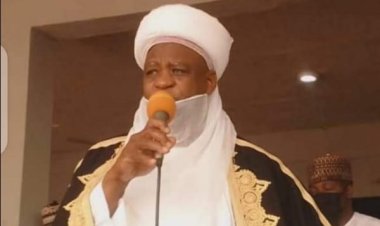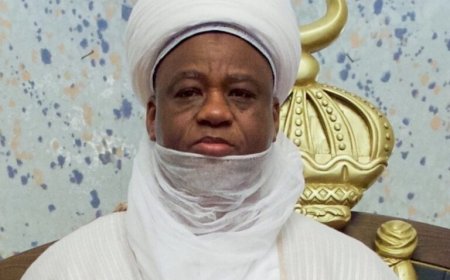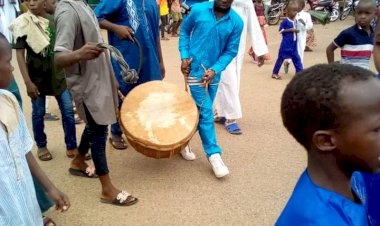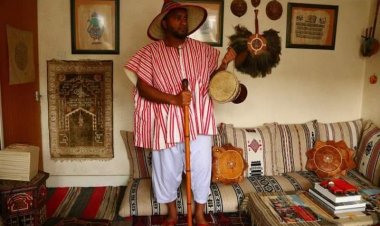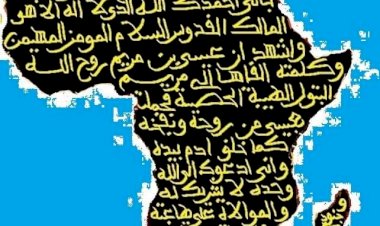THE ORIGIN & DEVELOPMENT OF ISLAMIC SCHOLARSHIP IN HAUSALAND
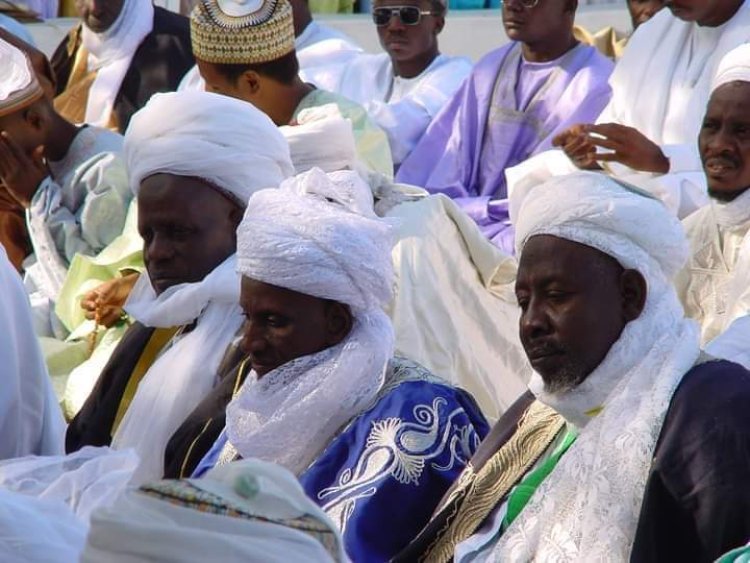
by Shaykh Muhammad Shareef bin Farid
According to the Tarikh Kano (‘Kano Chronicles’) Islam entered into the central bilad’s-sudan of Hausaland during the 14th century at the hands of Dyula Mande speaking scholars who were known as Wangara. 1
From the beginning of the 15th century, the people of this region began to experience the general political and cultural revitalization that was affecting the whole of the bilad’s-sudan at the time. However, Islamic learning and specialization did not spread in the region until about the 16th century.
In the Kitaab Aslu al-Wangariyun it mentions the story of the transmission of learning into the region and reflects the lack of learning that affected the region at the time:
" وشاع في الناس أن رجلا مشرقيا جاء بكتاب يقال له الخليل قد أعجب الناس فرعيته ومشهور كلامه حتى قال الشيخ غدا إن شاء اللّه سأركب الى هذا الرجل لأسمع قراءة هذا الكتاب."
“The news spread among the people of a man from the east who came with a book that he called ‘al-Khalil’. The people were amazed with his explanation and the popularity of his teachings until eventually the chief said: ‘Tomorrow Allah willing I will journey to this man and listen to his reading from that book.” 2
From the above it is clear that the intellectual life of the region was affected, for the most part by scholars from abroad. The banner of learning was steered mainly by the scholars from Songhay and Kanem-Bornu. From the 15th century, onward Hausaland began receiving the repeated arrival of scholars and merchants from the west and east and they are credited with broadening and deepening the scope of the region’s intellectual life.
Among the first of the governors of the region to show interest in social reform in Hausaland were the famous ruler of Kano – Muhammad Rumfa [1463 - 1499] and the ruler of Katsina – Ibrahim ibn Muhammad [1493 - 1498]. 3

It was during their rule that the region witnessed the arrival of numerous scholars from abroad. The first of them was renowned al-Imam Abd’l-Kareem al-Maghili who is regarded as the actual founder of the intellectual and reform movement that affected the region. His writings both religious and political opened the door of social reform in the lands of Songhay, Kanem-Bornu, and Hausaland.
Likewise, al-Imam Jalaludeen Abd’r-Rahman as-Suyuti in turn shared in nourishing the intellectual renaissance that impacted the region through his many letters and legal decisions to their rulers. 4
The author of the Tarikh Kano mentioned that during the rule of Muhammad Kayasuki [1509 – 1565] there arrived numerous scholars into the region. Among these were Shaykh at-Tunusi who brought with him the famous as-Shifa of Qadi `Iyad ibn Musa.
This text was the fundamental text on understanding the nature of the prophethood of sayyidinaa Muhammad and the rights due to him from beliefs obedience and revival of his sunna. Wherever the as-Shifa was studied there also emerged active reform.

Another fundamental text that was introduced into the region during this same period was the al-Mudawwana’ l-Kubra of Sahnun.
The Tarikh Kano mentions that a Shaykh Abdullahi was the first to pioneer the study of this fundamental text on Maliki jurisprudence and the legal deduction of the social behavior of the people of Medina. He also introduced the study of the al-Jaami` as-Saghir of as-Samraqandi. 5
The chronicle goes on to mention two other scholars who arrived in Hausaland during the same time who were disciples of the famous Moroccan historian Shaykh Ibn Ghazi – Shaykh Makhluf al-Balbali and Shaykh Abd’r-Rahman ibn Suqan. 6
Likewise, three other scholars arrived into Hausaland from Bornu and were received well by Mai Kayasuki. One was appointed a regional judge and the other two were given an endowment of land in order to establish two schools that eventually flourished and attracted many students. 7
During the beginning of the 16th century, Hausaland witnessed a large influx of scholars from the region of Timbuktu due the turmoil created by Sonni Ali. The chronicles clearly affirm that the political turmoil and social upheaval that was taking place in Songhay at that time had positive consequences upon social reform in Hausaland especially in the domain of its intellectual life.
The educational system of Songhay with its didactic methodology and paths of transmission of learning was completely transferred into the regions of the central bilad’s-sudan to the point where little distinction could be made between what was transpiring in the city of Timbuktu and that of Kano and Katsina.
This connection was the result of many scholars who had migrated into Hausaland from Songhay. Among them west was the grandfather of the famous Ahmadu Baba, al-Hajj Ahmad ibn Umar ibn Muhammad Aqit, about whom he said:
"كان محبا في النبي صلّى اللّه عليه وسلّم ملازما لقراءة قصائد مدحه وشفاء عياض على الدوام فقيها لغويّا نحويّا عروضيّا محصّلا اعتنى بالعلم طول عمره وكتبه كتب عدّة كتب بخطّه مع فوائد كثيرة وترك نحو سبعمائة مجلّد "
“He was a lover of the Prophet, may Allah bless him and grant him peace, exemplified by his constant singing of praise songs for him and his unfailing reading of the Kitab 's-Shifa of Qadi `Iyad. He was a jurist, linguist, grammarian, an expert in the science of prosody and very erudite.
He was an assistant to the cause of learning and education throughout his entire life. He composed numerous books, writing them with his own hand that contained enough room on the sides for annotations. He is alleged to have left behind a library which contained 700 volumes.” 8
In this way al-Hajj Ahmad was able to share in establishing the principles of knowledge and erudition in Hausaland. It is known that he did not return to Songhay until after the change of the guard take took place at the hands of Askiya Muhammad. 9

Among the more influential scholars of Timbuktu who helped bring about social reform in Hausaland was Muhammad ibn Ahmad at-Tazakhati.
“He was a jurist, scholar and a wise master of the science of prophetic traditions. He was versatile and proficient in diverse sciences and an excellent calligrapher. He possessed superb comprehension which became manifest in the many discussions he engaged in.”
He traveled to Egypt and studied with many venerable scholars, like the Shaykh 'l-Islam Zakariyya, the dialecticians: al-Qalqashindi; Ibrahim ibn Muhammad ibn Abu Bakr [833 -923 A.H./ 1426-1516 C.E.]; Abd 'l-Haqq ibn Muhammad 's-Sunbati, [842 - 931 A.H./ 1435-1524 C.E.]; and others.
He then went to Mecca and studied with Abu'l-Barakat 'n-Nuayri, his paternal cousin Abd 'l-Qaadir, Ali ibn Naasir 'l-Hijazi, Abu 't-Tayyib 'l-Busti and others.
“He then returned to the bilad 's-sudan and took up permanent residence in the town of Katsina. There he was honored by its people and was appointed over the judiciary. He died in that same region in the year 936 A.H. at the age of sixty and some odd years (1530 C.E.). He composed a commentary as notes on the margins of the al-Mukhtasar of Shaykh Khalil called Taqaayeed wa Turar `Ala Mukhtasar Shaykh Khalil.” 10
There were others scholars such as Muhammad ibn as-Sabbagh, and al-`Aqib ibn Abdullahi al-Masufi. Sultan Muhammad Bello gives us a more comprehensive list in his Infaq of the scholars who laid the foundation of social reform and education in the Hausaland from the 16th century up until the 19th century, when he says:
“Among the scholars of this country is the erudite imam the learned Muhammad al-Kashnawi al-Fulani…It was said that he took learning and spiritual bounty from the scholars of the two sacred places and Egypt.
Among them was the learned shaykh, the proficient scholar - Muhammad Massina. He produced many scholarly work.
Among these were his an-Nafhat al-`Anbariyya, a commentary upon the al-`Ishriniyya; his Bazuugh as-Shamsiyya, a commentary upon the al-`Ashmawiyyat; and his Azhaar ar-Ribba Fi Akhbaar Yoruba.
Among them was Hashim and Ibn Taakuma …Among them was Shaykh Harun az-Zakzaki, the shaykh of the shaykhs of the Fulani.
Among them was the erudite shaykh Ramadhan ibn Ahmad. He was originally from Fezan, but settled in Zanfara. He produced many poems and scholarly works… like his versification of the narrators of the as-Saheeh of al-Bukhari and his al-Jawhara concerning the evils of the science of astrology.
Among them was the learned and erudite shaykh of proficient understanding, the eloquent - Umar ibn Muhammad ibn Abu Bakr at-Turuudi. He was originally from Kebbi … He produced many publications and poetry… like his Takhmis on the al-Kawaakib ‘d-Duriyya of al-Busayri. He also produced a Takhmis on the Baanat Sa`aad…Among them was the Shaykh Ali Jobo…He authored a commentary upon the al-Kubra and a commentary upon the Laamiyat ‘l-Af`aal.” 11
All of these scholars brought erudition into Hausaland from Songhay, Kanem-Bornu, Ahir, Sus’l-Aqsa, Ifriqiyya, Morocco, Egypt, and the Hijaz. Along with the transmission of knowledge came thousands of rare Arabic manuscripts covering the fundamentals sciences of Islam and its branches.
The influx of western and eastern scholars into Hausaland had major influence upon the development of calligraphic styles. As mentioned above the styles of timbukti-andalusi came into the region from Songhay while the styles of barnawi-ifriqi was introduced from Kanem-Bornu.
For more than three centuries, the two styles overlapped and coalesced and there emerged a new style of script, which A.D.H. Bivar designated as jihadi. This style was characterized by its simplicity and compression. Examples of the hand of Muhammad Bello and the earlier scholars of the Jihad give clear samples of the efficiency of this script. 12
Among the key scholars of this time who acted as forerunners to the Fulbe’ led reform movement was Shaykh Jibril ibn Umar, Shaykh Uthman Bidduri, and Shaykh Mukhtar al-Kunti. These scholars led to the explosive period of the 19th century where the Fulbe’ Toronkawa initiated their reform throughout the lands of the Hausa.
In addition Abdullahi Dan Fodio mentions more than 25 scholars from whom he and his brother Shehu Uthman took knowledge and mentions at least 45 texts with their commentaries. Even this list is meager as the author admits;
“In short, the shaykhs of Shehu Uthman were many. Some of them I knew and some of them I did not know.” Moreover, in the end of the text he says: “I am unable to enumerate all of the shaykhs from whom I acquired knowledge, but these were the principle ones among them.
How many scholars and seekers of knowledge came to us from the east from which I profited, so many that I cannot count them. In addition, how many scholars and seekers of knowledge came to us from the west from which I profited, so many that I cannot count them.” 13
Gidadu ibn Laima mentions more than 89 shaykhs from whom the Shehu studied knowledge. He also cites more than 82 students of the Shehu who had attained success in their spiritual goal and had attained the station of ‘teaching shaykh’. 14
Perhaps the most significant indicator of the transmission of knowledge and reform during the jihad period was the transmission of knowledge through the line of the scribes. Gidadu ibn Laima gives a list of the scribes of the Shehu in Rawdat’l-Janaan:
“They were his close companion, the renown scribe Malam al-Mustapha, nicknamed Malam Tafa, Muhammad Bello, Umar al-Maghribi, al-`Azihisi, Buuli, Muhammad Ahmed, nicknamed Ahmed Malle', Salaah Hassan Nabaadiku, the Amir of the scribes Sanbo, Muhammad Ghaanih, Muhammad al-Magribi, Isma`il, Muhammad Nagharu, Muhammad Kuule', Muhammad Ghaabidu, Sa`id, and Bunduwa.” 15
The most prominent of these scribes was Malam al-Mustafa who was also numbered among the personal servants of the Shehu. This is important because as a servant and scribe to the Shehu the level of education that he received from the Shehu was selective. Proximity to the teacher guaranteed a deeper level of transmission. 16
This can be demonstrated by the following oral tradition narrated by Mervyn Hiskett regarding Malam Muhammad Tukur where the Shehu said:
“Indeed, what Muhammadu Tukur knows is far beyond what you know [because you live apart, while Muhammadu Tukur lives here in this compound with me.” 17

If this is an indication of the level of transmission a student may attain from the teacher, then Malam al-Mustafa as personal servant and scribe had access to a great deal of learning from the Shehu. Malam Mustafa studied in the home of the Shehu first under his son Muhammad Sa`d ibn Shehu from whom he learned Arabic grammar and calligraphy. 18
He then studied with another famous scribe and calligrapher – the brother of the Shehu – Abdullahi Dan Fodio. Ibn Qadi al-Hajj describes Abdullahi as being “passionately devoted to teaching and writing down knowledge at all times and this remained his habit from childhood until the time he passed away to his Lord.” 19
Abdullahi himself mentions his dedication to transcription in his `Ida ‘n-Nusuukh:
" وحصل لي بحمد اللّه التبصّر في الدّين من فيضان نوره ومن تواليفه المفيدة العربيّة والعجميّة فما الّف كتابا من اوّل تواليفه إلى الان إلّا كنت اول من نقله عنه غالبا "
“By the praises of Allah, I attained insight into the religion by means of the overflowing of the lights of the Shehu and through his beneficial writings, both in Arabic and non-Arabic (ajami). For he never composed a work from his first composition until the present except that I was, for the most part, the first to copy it down from him.” 20
Sa`ad ibn Abd’r-Rahman mentioned that Abdullahi was responsible for training more than 750 students to whom he transmitted the ideals of the jihad and reform. Malam al-Mustafa was among the leaders of these disciples. Among the other teachers of Malam al-Mustafa was Imam Zayd al-Muhadith with whom he studied the sciences of prophetic traditions. 21
Among them was Shaykh Mode Mamari, with whom he studied the sciences of grammar, syntax, arithmetic, and the science of inheritance. With him he studied many books on linguistics such as the Diwaan as-Shu`araa as-Sitta, and the Maqaamat of Hariri. He also studied the science of tafsir with this renowned scholar. 22
Among them was Shaykh Ali Ghoy. This teacher instructed him in the al-Kawkab’ s-Sati` of Imam as-Suyuti. He also learned from him the sciences of genealogies and historiography. 23
Among his teacher was Shaykh Ibrahim Barnawi, with whom he studied the Mukhtasar of Khalil and its commentary from al-Kharashi. 24
The scholars who were the colleagues of Malam al-Mustafa in the pursuit of knowledge were Nana Asma’u, Uthman ibn Is’haq, Muhammad Bello, Gidadu ibn Laima, Ali ibn Abdullahi Dan Fodio, and Ibrahim Khalil ibn Abdullahi. Malam al-Mustafa was responsible for creating a cadre of students who took the torch of knowledge and reform into the following generation.
Among these were Muhammad al-Bukhari ibn Shehu, his own son Abd’l-Qaadir ibn Malam al-Mustafa, Abd’l-Qaadir ibn Shehu, Muhammad ibn Muhammad Julde’, Alfa Umar ibn Abdullahi, Sa`d al-Gharbi, and Ahmad an-Nakalif. 25
The second generation of the Sakkwato scholars carried on the tradition of transmission and book production right into the 20th century. There exist both in Nigeria as well as the Republic of Sudan Arabic manuscripts that reflect the persistence of this scholarly tradition.
Among the second generation scholars, whose works were found in Sudan, were Abd’r-Rahman ibn Uthman ibn Abd’l-Qaadir Dan Tafa, who composed an excellent poem on the science of tawheed called Nadhim’t-Tawheed.
He was also the scribe for the famous manuscripts called Risaalat wa Naseehat written by the Chief Judge Abdullahi Mode’ Abdu in 1901. I rediscovered this manuscript in the home of Shaykh Bello ibn Abd’r-Raaziq ibn Uthman ibn Abd’l-Qaadir Dan Tafa in 1987.
There are several works by Abd’l-Qaadir ibn Gidadu. There is a poem in praise of the Amir’l-Mu’mineen Ali by the chief judge of Gwandu, Ahmad ibn Sa`d. Ahmad ‘r-Rufai`, Muhammad ibn Jolla, al-Qadi Abdullahi Mode Abdu, Bashir Ahmad ibn Abdullahi, Bello ibn Uthman, Ibrahim ibn Abd’l-Qaadir ibn Gidadu, Muhammad ibn Said ibn Bello, Uthman ibn Sanbu ibn Abd’r-Rahman, and Uthman Wali ibn Abd’l-Qaadir ibn Gidadu.
The following are the second-generation scholars whose works are still extant in Northern Nigeria. Among them are Abu Bakr ibn Uthman ibn Abdullahi, Ahmad Sa`d, Ahmad ar-Rufai`, al-Qadi Abdullahi Mode Abdu, Malam Maani Sokoto, Muhammad ibn Jibril, Muhammad Mu`allah Yede ibn Abd’l-Qaadir Dan Tafa, Muhammad Sanbu Dan Dayye’, Muhammad al-Awwal ibn Uthman ibn Is’haq, Muhammad al-Wali ibn Sulayman al-Felati, Mustafa ibn Muhammad al-Bukhari, Saad ibn Abd’r-Rahman, Said ibn Muhammad Bello, Umar ibn Muhammad al-Bukhari, Waziri Muhammad al-Bukhari ibn Ahmad, and Waziri Junaydu ibn Muhammad al-Bukhari.
There exists in Hausaland a rich tradition of transmission of learning starting from the immigration into the region of scholars from Songhay and Kanem-Bornu in the 14th century to the present; where scholar merchants keep alive learning in the cities of Kano, Zaria, Maidugari, Katsina, Kaduna, Zamfara, Sallame, Wurno, Gwandu, Illorin, Kebbi, Talata Mafara and Sokoto.
FOOTNOTES:
1. Kitaab Tarikh Kano, (manuscript), folio 14; see Adam al-Ilorin, Muujaz Taarikh Nigeriyya, Beirut, (1978), p. 81.
2. Prof. Ahmed Kani, “Mudhaahir al-Itisaalaat ‘l-Fikriyya Bayna Shimaal Ifriqiyya wa Wast ‘s-Sudan”, Mujalat ‘l-Buhuuth ‘t-Taarikhiya ‘l-Libiyya, Vol. 1, January (1981), p. 14.
3. Kitaab Tarikh Kano, Op. cit., folio 22.
4. Prof. Ahmed Kani, The Intellectual origins of Islamic Jihad in Nigeria, London, (1981), p. 27.
5. Kitaab Tarikh Kano, Op. cit., folio 24.
6. Ibid, folio 25., see also J.F. Ajayi, History of West Africa, London (1974), Vol. 1, p. 278.
7. Kitaab Tarikh Kano, Op. cit., folio 25.
8. Abd’r-Rahman ibn Abdullahi as-Sa`adi, Taarikh ‘s-Sudan, edit Houdas, Paris, (1974), p 37.
9. Ibid. , P 37.
10. Ibid., p 39.
11. Muhammad Bello, Infaq al-Maysuur Fi Tarikh Bilaad ‘t-Takruur, edited by C.E.J. Whitting, London, (1957), pp. 23-26.
12. A.D.H. Bivar, “Arabic Documents of Northern Nigeria”, BSOAS, XXII, 2 (1959), p. 12.
13. See Mervyn Hiskett, “Material Relating to the State of Learning Among the Fulani before the Jihad”, Bull, School of Oriental and African Studies, Vol. XIX, 1957.
14. See Gidadu ibn Laima, Rawdat ‘l-Janaan, trans. Muhammad Shareef, Sankore Institute ©, Fairfield, 1994, p, 19 & pp. 22-23.
15. Ibid.
16. Ibid. p. 18.
17. Mervyn Hiskett, The Sword of Truth: the Life and Times of the Shehu Usuman Dan Fodio, New York, (1973), p. 32.
18. Abdullahi ibn al-Qadi al-Hajj, Wajeez Fi Ta`reef as-Shaykh al-Mustafa ibn Muhammad at-Turuudi, trans. Dr. Umar Bello, Sokoto, (1973), p. 5.
19. Ibid. p. 8.
20. Abdullahi Dan Fodio, Ida` ‘n-Nusuukh Man Akhadhtu Min’s-Shuyukh, manuscript, folio 5.
21. Abdullahi ibn al-Qadi al-Hajj, Op. cit. p. 8.
22. Ibid. p. 12.
23. Ibid. p. 13.
24. Ibid. p. 14.
25. Ibid. pp. 20-21.
SOURCE:
African Libraries More Valuable Than Gold:








